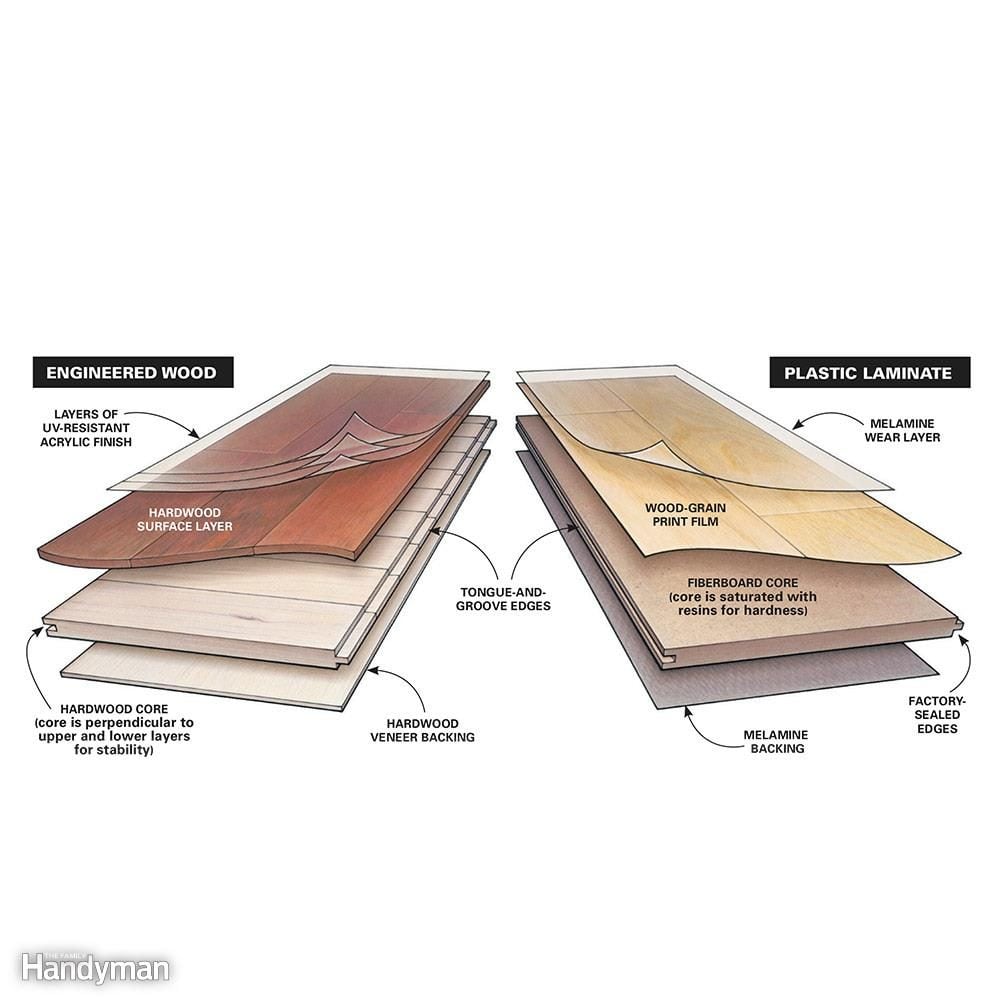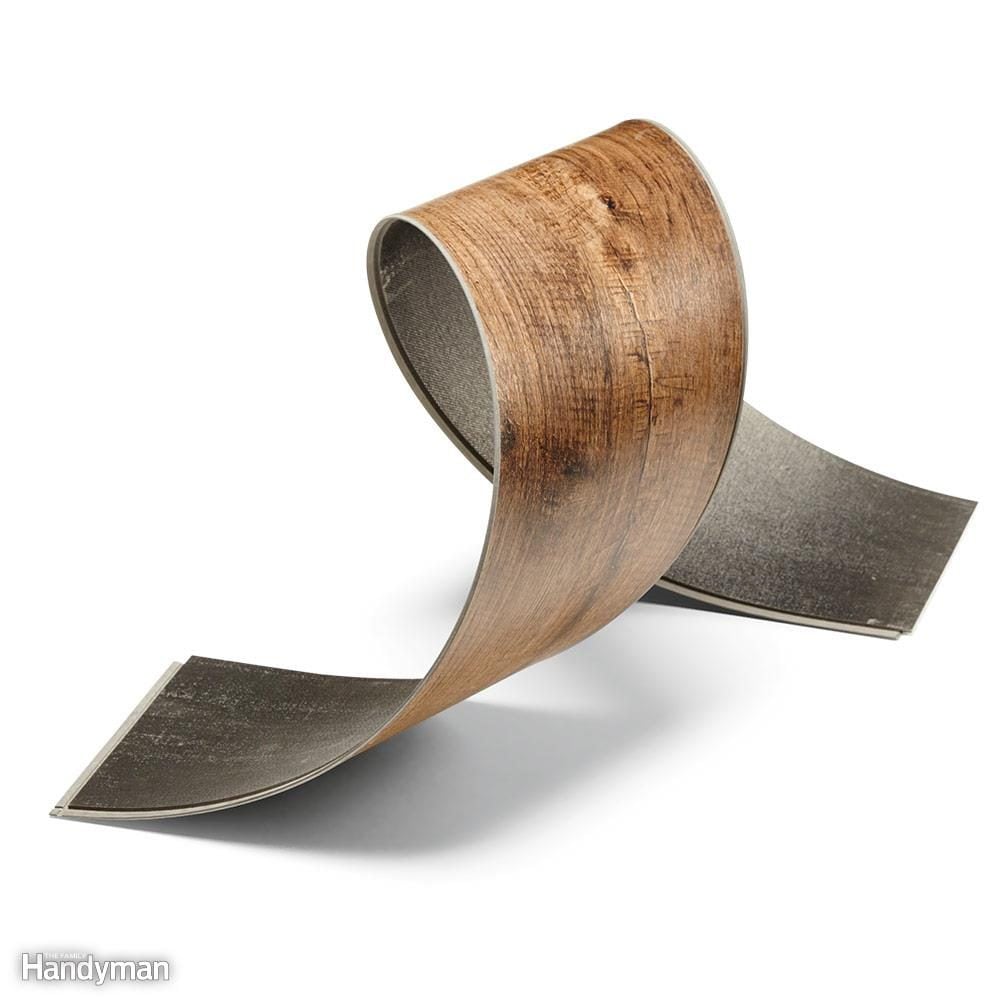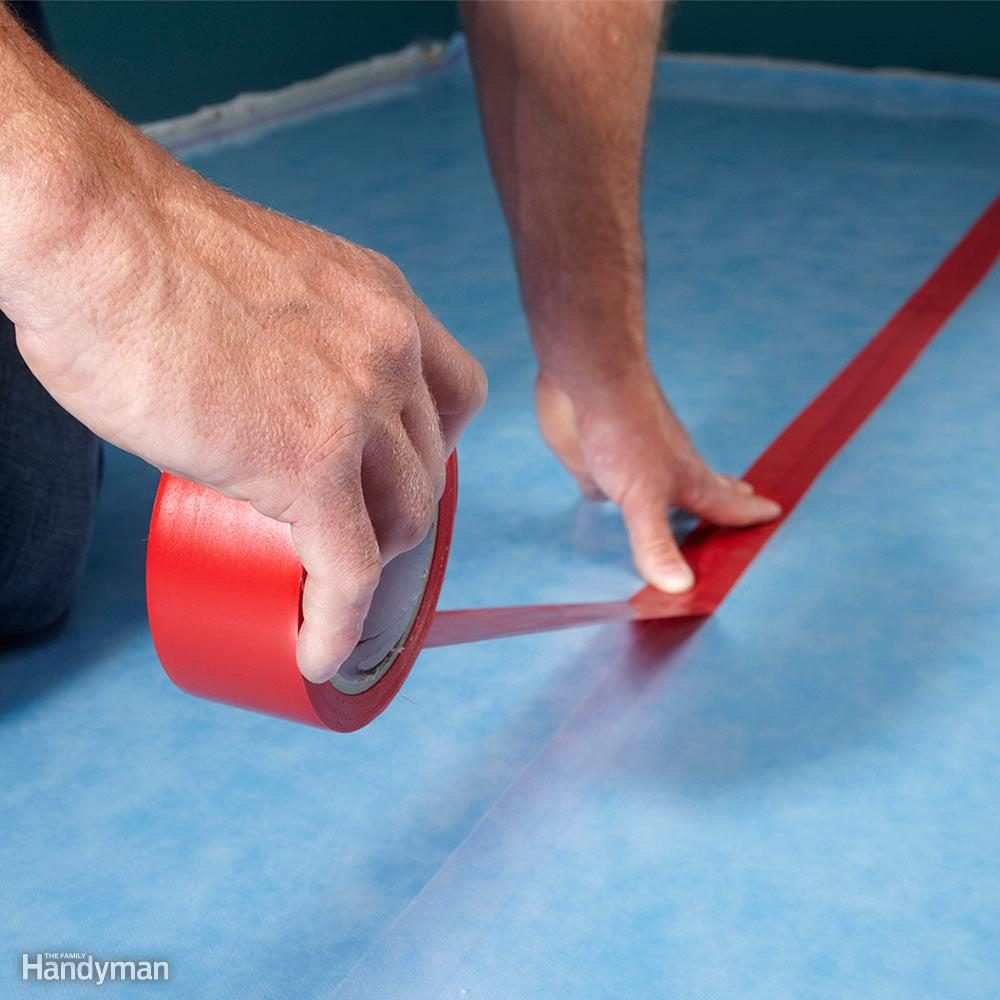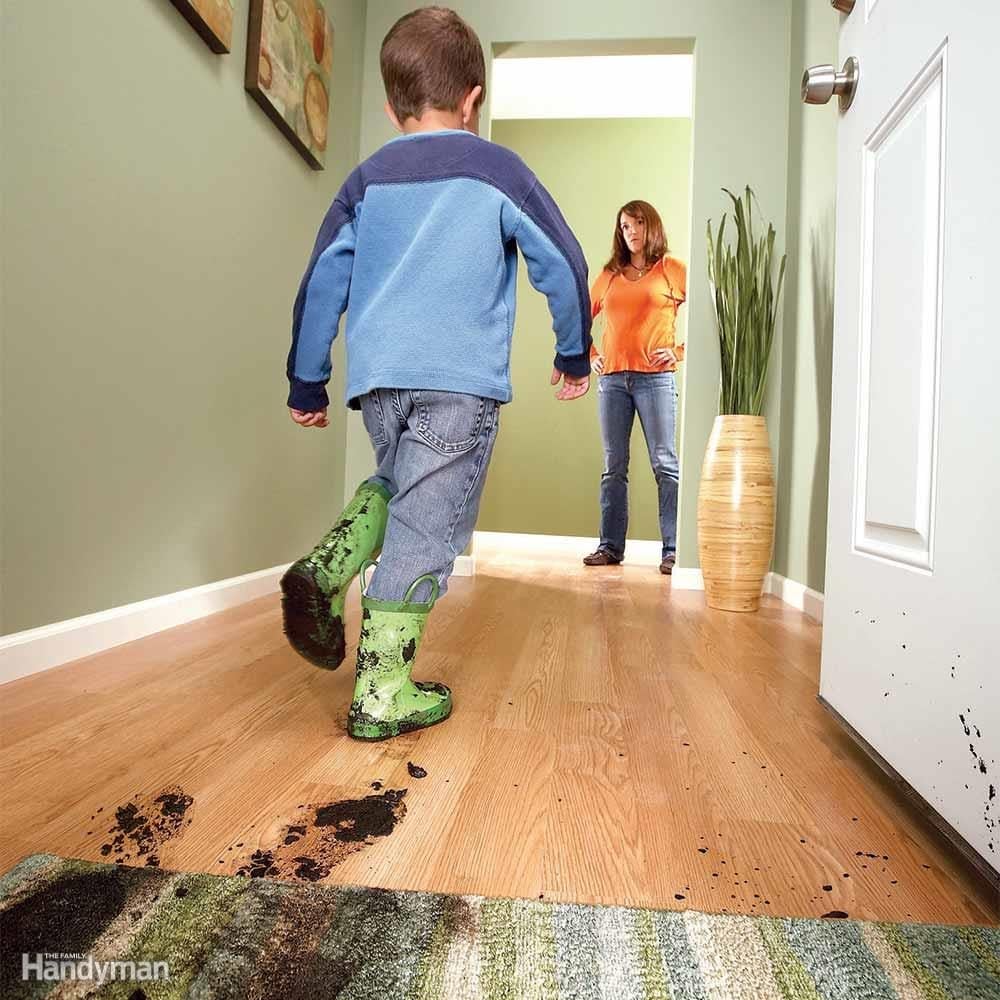
Types of laminate flooring: Two Styles of Laminate Flooring

Don't Forget LV Flooring!
Laminate floors aren't the only option for durability and ease of installation. Next time you're at the home center, take a gander at luxury vinyl (LV) flooring. There's luxury vinyl tile (LVT), which looks like ceramic tile, and luxury vinyl plank (LVP), which mimics wood (shown here). Both types are extremely resilient, about the easiest flooring in the world to install and completely waterproof. Since luxury vinyl is so pliable, it's a great choice over uneven subfloors.

Don't Forget the Underlayment
All laminate flooring needs foam underlayment. Don't skip it. Underlayment prevents the floor from clicking on the subfloor as you walk across it and makes it feel a bit softer. It also makes the planks easier to install because it evens out small inconsistencies in the subfloor. Some underlayment has self-adhesive tape to join one row to the next. Others call for separate tape. Be careful to use whatever is required. Go ahead and buy the special laminate and wood flooring installation tool as well. You'll need it to pull together flooring ends where each row abuts a wall.

Choose a Finish Based on Lifestyle, Not Just Looks
If you lead a quiet life, choose whatever flooring style appeals to you. But if you have one of those crazy households with kids, pets and lots of visitors, be a bit more careful. Flooring with a varied grain pattern, a low-gloss finish or distressed or hand-scraped patina will look much better, much cleaner, much longer than flooring with a glossy, monolithic grain pattern.

Avoid Wide Planks Unless the Substrate is Perfect
The directions will tell you the amount of slab or subfloor unevenness tolerated by the brand and type of flooring you buy. Over an uneven floor, wider planks will be harder to snap together, end joints won't stay flush with one another and there will be more gaps beneath the planks that you'll feel when you walk across the floor. So if your concrete or wood subfloor is quite uneven, you're better off selecting a narrower plank style, and being thorough when you apply the floor leveling compound.